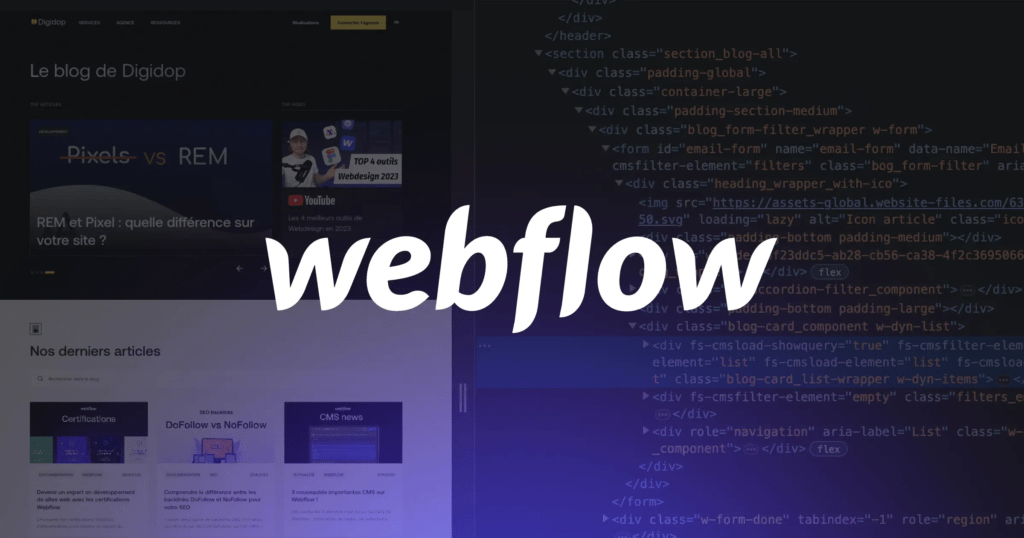Crafting an impactful UX design portfolio is essential in today’s competitive landscape, where recruiters dedicate mere minutes to evaluating your potential. It’s a nerve-wracking reality, but fear not. There are strategic approaches to make your portfolio stand out and keep those decision-makers engaged.
In this guide, we’ll delve into expert advice on how to curate a portfolio that captivates attention and showcases your prowess in UX design. Also, we’ll explore the key elements that make a portfolio unforgettable.
Join us as we unravel the secrets to building a winning UX design portfolio that leaves a lasting impression on recruiters and sets you apart in the field.
What are UX Portfolios?
A UX portfolio is one of the first things a hiring manager will look at when considering you for a job. It’s your best way to demonstrate your value as a UX designer to potential employers, clients, or collaborators. It shows not only what you can do, but how you think, how you approach challenges, and how you communicate your ideas.
UX portfolios play several crucial roles:
1. Demonstrating Skills and Knowledge:
Through case studies and project descriptions, UX portfolios illustrate the designer’s proficiency in various aspects of UX design, including research, ideation, prototyping, and usability testing.
2. Attracting Opportunities:
A well-crafted UX portfolio acts as bait, attracting recruiters, clients, and potential employers who are seeking talented UX designers. It serves as a powerful tool to showcase one’s capabilities and stand out in a competitive job market.
3. Staying Current:
UX portfolios are not static documents; they evolve over time to reflect the designer’s growth, learning, and recent achievements. By regularly updating their portfolio with new projects and experiences, designers can stay current and relevant in their field.
What Key Features Catch Attention in a UX Portfolio?
A standout UX portfolio is more than just a collection of projects; it’s a carefully curated showcase of your skills, process, and passion for creating exceptional user experiences. Here are some key elements that can make your UX portfolio stand out:
1. Narrate a Compelling Story:
Crafting a compelling UX portfolio begins with weaving a narrative that captivates the reader. Your journey as a UX designer should unfold like a story, with a clear beginning, middle, and end. Introduce yourself, outlining your years of experience and setting the stage for what readers can expect to discover in your portfolio. Describe each project as a chapter in your story, detailing the challenges you faced, the solutions you devised, and the outcomes you achieved.
2. Design and Layout:
The design and layout of your portfolio should be clean, intuitive, and visually appealing. Use a clear, concise language and a logical visual hierarchy to guide the reader through your work. Employ descriptive headings and subheadings to organize your content effectively and make it easy to navigate. Incorporate visuals such as images, diagrams, and prototypes to showcase your designs and solutions.
3. Selective Content:
Focus on quality over quantity when selecting projects to include in your portfolio. Choose projects that best demonstrate the breadth and depth of your expertise as a UX designer. Explain why you selected each project and how it showcases your skills and versatility. Highlight the results and challenges you encountered, emphasizing the impact of your work on users and business objectives.
4. Accessibility and Usability:
Demonstrate your commitment to creating inclusive designs by emphasizing usability and accessibility in your portfolio. Showcase examples of how you integrated accessibility features into your designs to accommodate diverse user needs. Explain how your designs exceed user expectations and provide user satisfaction by focusing on users’ needs and behaviours.
5. Human-Centered Approach:
At the core of UX design is a human-centred approach that prioritizes the needs and behaviours of users. Describe the methods and techniques you use for user research and insight gathering, emphasizing the direct influence of user feedback on your designs. Use personas, user stories, or empathy maps to guide your design process and ensure that your audience understands the user-focused foundation of your work.
6. Collaboration Skills:
Highlight your collaboration skills by showcasing examples of how you worked with other designers, developers, and stakeholders. Describe how you effectively communicated with team members to meet project requirements and achieve shared goals. Emphasize your ability to work within a team and your commitment to fostering collaboration and communication.
7. Client Feedback and Endorsements:
Incorporate feedback and testimonials from clients and stakeholders to add credibility to your portfolio. Summarize the impact of your work on users and business objectives using real-world validation and testimonials. Enhance the look of your portfolio with visuals that showcase the positive outcomes of your projects.
8. Process Insights:
Go beyond showcasing your final designs by providing insights into your design process. Detail your research and testing methods, from initial concept to final implementation. Include samples of research reports, sketches, wireframes, and design prototypes to illustrate your approach to UX design and demonstrate your problem-solving skills.
9. Personal Branding:
Infuse your personality into your portfolio to create a personal connection with your audience. Let your personal brand shine through in your work, showcasing your unique style and approach to UX design. Make your portfolio engaging and memorable by sharing how your personality influences your designs.
10. Quantify Success Metrics:
Include quantifiable results that demonstrate the impact of your UX design work. Showcase statistics related to user engagement, conversion rates, or other key performance indicators that reflect the success of your projects. Use visual comparisons to highlight the transformation your designs brought about and reinforce the effectiveness of your work.
Best Practices for UX Designer Portfolios
Crafting a compelling UX designer portfolio goes beyond mere project displays. Thus, here are the essential the best practices for crafting impactful UX Designer Portfolios:
1. Thoughtful Project Curation:
Carefully select a diverse range of projects to showcase your versatility as a UX designer. Highlight projects from various industries or with different target audiences to demonstrate your adaptability and expertise.
2. Demonstrate Problem-solving:
Clearly define the problems you addressed in each project and illustrate your approach to solving them. Use visuals such as personas or customer journey maps to provide context and showcase your problem-solving skills effectively.
3. Be Concise:
Keep your portfolio focused and succinct. Use clear and compelling copywriting to convey your skills and experiences efficiently. Prioritize essential information and present it in a straightforward manner to make it easier for potential employers or clients to grasp your abilities quickly.
4. Emphasize Collaboration:
Highlight your ability to work effectively within a team by acknowledging your contributions as a collaborative team member. Strike a balance between showcasing your individual skills and recognizing the importance of teamwork in achieving successful project outcomes.
5. Commitment to Growth:
Showcase your dedication to continuous learning and development by including details about relevant certifications, courses, or workshops you’ve completed. Explain how these learning experiences have influenced your approach to UX design and contributed to the success of your projects. Demonstrating your commitment to growth highlights your readiness to adapt to new challenges and embrace evolving industry trends.
Top 4 UX Portfolio Website Builders in 2024
Crafting a captivating user experience has never been easier with these cutting-edge platforms. Whether you’re a seasoned designer or just starting out, these tools offer the perfect blend of functionality and aesthetics to showcase your talent and expertise in the digital realm. Let’s dive into the innovative solutions reshaping the landscape of UX portfolio creation.

1. Webflow
Features:
- Visual drag-and-drop editor combined with robust customization options
- Ability to design responsive websites without code
- Hosting and content management system integrated into the platform
- Advanced interactions and animations for engaging user experiences
- Access to a community of designers and developers for support and inspiration
Pros:
- Powerful design capabilities without needing to write code
- Flexible hosting and content management features
- Extensive support for animations and interactions
- Active community and resources for learning and troubleshooting
- Responsive customer support
Cons:
- Steeper learning curve compared to simpler website builders
- Pricing might be higher compared to some competitors
- Limited availability of pre-designed templates
Pricing:
Webflow offers various pricing plans, starting from $12 per month for basic hosting and scaling up depending on additional features and services.
Rating: 4.7/5

2. WordPress with Elementor
Features:
- WordPress is a versatile and widely used content management system
- Elementor is a powerful drag-and-drop page builder plugin for WordPress
- Thousands of themes and templates available for customization
- Extensive plugin ecosystem for adding functionality
- SEO-friendly architecture for better search engine visibility
Pros:
- The flexibility of WordPress combined with the ease of Elementor’s drag-and-drop interface
- Wide range of themes and plugins for customization and functionality
- SEO-friendly structure helps improve search engine rankings
- Community support and resources available for learning and troubleshooting
- Ability to scale the website as needed with WordPress’s robust framework
Cons:
- Requires more technical knowledge compared to some dedicated website builders
- Maintenance and security responsibilities fall on the website owner
- Performance might be affected by the choice of hosting and plugins
Pricing:
WordPress itself is free, but users will need to purchase hosting and may incur costs for premium themes and plugins. Elementor offers both free and paid versions, with additional features unlocked in the paid version starting from $49 per year.
Rating: 4.6/5

3. Wix
Features:
- Drag-and-drop interface for easy website building
- Hundreds of customizable templates, including many tailored for UX portfolios
- Integration with third-party tools and plugins for added functionality
- Built-in SEO features to improve visibility
- Mobile-responsive designs for optimal viewing across devices
Pros:
- User-friendly interface suitable for beginners
- Extensive template library catering to various design aesthetics
- Versatile customization options to tailor the portfolio to individual preferences
- Built-in SEO tools help improve search engine ranking
- Mobile responsiveness ensures a seamless experience on all devices
Cons:
- Customization options might be limited for advanced users with specific requirements
- Some features may require additional costs or subscriptions
- Limited scalability for complex projects or large-scale websites
Pricing:
Wix offers a range of pricing plans, including a free tier with limited features and premium plans starting from $14 per month.
Rating: 4.5/5

4. Adobe Portfolio
Features:
- Integration with Adobe Creative Cloud for seamless workflow
- Customizable templates designed for creatives, including UX designers
- Easy synchronization with Behance for portfolio updates
- Responsive designs optimized for various devices
- Built-in analytics to track portfolio performance
Pros:
- Seamless integration with Adobe Creative Cloud tools
- User-friendly interface suitable for designers of all skill levels
- Automatic updates from Behance streamline portfolio management
- Mobile-responsive designs ensure a consistent user experience
- Built-in analytics provide valuable insights into portfolio performance
Cons:
- Limited customization options compared to standalone website builders
- Reliance on Adobe Creative Cloud subscription for full functionality
- May not be suitable for those who prefer more control over design and features
Pricing:
Adobe Portfolio is included with Adobe Creative Cloud subscription plans, starting from $9.99 per month.
Rating: 4/5
Top Design Guidelines for Creating Your Own Online UX Design Portfolio
A well-crafted online UX design portfolio is crucial for showcasing your skills and attracting potential clients or employers. Your portfolio is your digital calling card, presenting your expertise, creativity, and attention to detail.
To stand out in a competitive field, it’s essential to adhere to top design guidelines that ensure your portfolio captivates and engages its audience effectively.
Let’s explore the key principles to help you create a compelling online UX design portfolio that leaves a lasting impression.
1. Clear Homepage Introduction:
Introduce yourself concisely on the homepage to make a strong first impression. Include your name, job position, and possibly your location in 3 sentences or less. Let your personality shine through to engage recruiters from the start.
2. Selective Case Studies:
Feature only 2–3 of your best UX case studies to showcase quality over quantity. Choose projects that are exceptional and relevant to your desired job role, following the lead of top designers like Victoria Kazakova.
3. Prioritize User Experience:
Ensure a seamless user experience throughout your portfolio. Simplify navigation, incorporate proper affordances, and prioritize readability and color contrast to impress recruiters with your attention to detail, as seen in portfolios like Olivia Truong’s.
5. Detailed About Section:
Create a separate “About” page or section to provide more information about yourself. Include details about your background, work history, education, and links to your professional profiles on platforms like LinkedIn and Behance, following the example of Sophie Chen.
6. Separate Side Projects:
Highlight your side projects in a dedicated section to showcase your passions and personality. Place them below your case studies to maintain focus while still giving recruiters insight into your creative interests, as demonstrated by Yu-Hsuan.
7. Consistent Visual Design:
Ensure visual harmony and consistency across your portfolio, even if you’re not a visual design expert. Utilize platforms like WordPress or Squarespace to leverage well-designed templates, as exemplified by Pascal Strasche.
8. Embrace Simplicity:
Don’t strive for perfection; instead, aim for a good enough version of your portfolio to launch it sooner. Continuously evolve and improve your portfolio over time while already having a valuable asset to present to potential employers.






 United States
United States United Kingdom
United Kingdom India
India Canada
Canada Singapore
Singapore















![10 Benefits of the Internet of Things You Should Know [2025]](https://www.appstory.org/wp-content/uploads/2025/03/ATS-10-Benefits-of-the-Internet-of-Things-You-Should-Know-2025@2x-80x60.png)




















